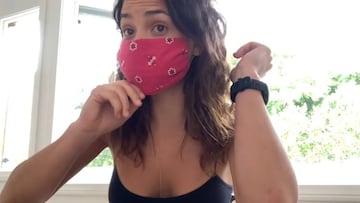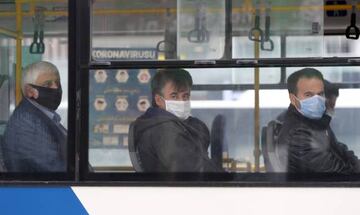CDC face masks: how to make, use and other instructions
The Centers for Disease Control and Prevention has published a number of ideas on how best people can use homemade masks in an attempt to reduce the spread of Covid-19

The original guidance from most governments around the globe as well as the World Health Organisation was that only health workers required masks to go about their business. Since then, there has been some movement and new advice is beginning to appear.
The Centres for Disease Control and Prevention (CDC) for one has published some useful suggestions on its website so that people can make their own masks at home, and have added numerous guidelines to aid in their use. Let’s have a look at what they have said.

How should I use a cloth mask on the face?
The CDC states that a cloth covering the face should:
- fit snugly but comfortably against the side of the face
- be secured with ties or ear loops
- include multiple layers of fabric
- allow for breathing without restriction
- be able to be laundered and machine dried without damage or change to shape
When should I wear my cloth mask?
The CDC advises people to wear these coverings in public setting where social distancing is more difficult. This could be in shops and pharmacies, for example. Anyone who has tested positive for the virus should wear the mask so as not to transmit to others and this also applies to those who have symptoms of the disease.
They say that ‘cloth face coverings fashioned from household items or made at home from common materials at low cost can be used as an additional, voluntary public health measure,’ but warn that they should not be used on children under the age of two, anyone who has breathing difficulties or anyone ‘unconscious, incapacitated or otherwise unable to remove the mask without assistance.’
These cloth face coverings that are being recommended are, they point out, not surgical masks or N-95 respirators, which are critical for healthcare workers and other medical first responders.
How can I clean my cloth face mask?
The masks should be washed regularly at a hot temperature, ideally in a washing machine to sterilise it. [A study undertaken by Stanford University gave some other ideas on disinfecting surgical masks if that is what you are using]
How do I make and remove my mask?
Care should be taken to remove the masks, ensuring that your eyes, nose and mouth are not touched. As soon as this has been done, and the mask has been placed in the washing machine, you should wash your hands thoroughly with soap.
For suggestions on how to make your own mask - either by sewing or without sewing - check out the guidance instructions provided by the CDC here with easy to follow diagrams. Here's a quick tutorial from Adria Arjona.
Follow all the latest news on the coronavirus pandemic with our live daily blog.





